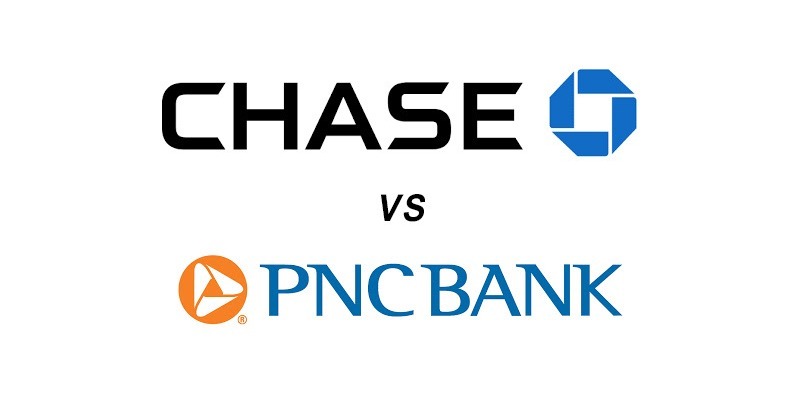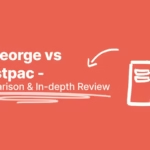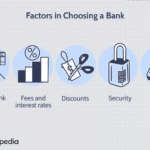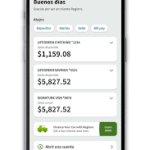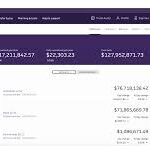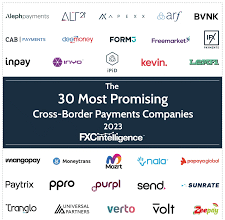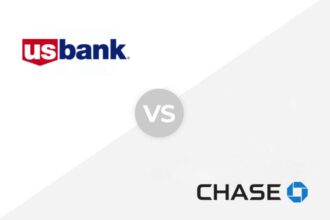As digital marketers and entrepreneurs, we live and breathe data. We optimize funnels, A/B test creatives, and obsess over conversion rates. But there’s one critical piece of our business infrastructure that often gets overlooked until it becomes a problem: our business banking partner.
Your bank isn’t just a vault for your cash; it’s the central nervous system of your financial operations. It dictates how quickly you get paid, how easily you can pay contractors, how seamlessly you can track expenses, and how you can access capital to fuel your next big growth spurt. A clunky online banking interface or a lackluster mobile banking app can cost you hours of administrative time each month—time that could be spent landing new clients or optimizing campaigns.
In the world of American finance, two titans consistently emerge in this conversation: J.P. Morgan Chase and PNC Bank. Both are behemoths, but they approach business banking with different philosophies and strengths. Choosing between them isn’t just about picking the branch closest to your office. It’s a strategic decision that can impact your efficiency, profitability, and scalability.
This is not your average bank review. This is a deep-dive showdown from the perspective of a digital marketer. We’ll dissect their digital banking platforms, compare their account structures, evaluate their integration capabilities, and explore the pathway from a simple checking account to more sophisticated financial tools like commercial banking and treasury services. Let’s settle the score: Chase vs. PNC.
Why Your Choice in Business Banking is Mission-Critical for Growth
Before we pit the two against each other, let’s establish the stakes. For a modern business, especially one in the digital space, your banking account is the cornerstone of your financial stack.
- Cash Flow Management: The speed and ease of moving money—in and out—is paramount. Slow processing times or cumbersome transfer interfaces can create cash flow crunches, even for profitable businesses.
- Operational Efficiency: A powerful online banking account with robust features for bill pay, user permissions, and expense tracking saves you from spreadsheet hell and reduces administrative drag.
- Scalability: As your business grows, your needs will evolve. You might need higher transaction limits, access to a line of credit, international wire capabilities, or even a private banking relationship. Your initial banking choice should be a partner that can grow with you.
- Integration Ecosystem: Your bank must play nice with the tools you already use. Seamless integration with accounting software like QuickBooks or Xero, and payment gateways like Stripe or PayPal, is non-negotiable. This is where the concept of open banking becomes incredibly relevant, allowing secure data sharing between your financial apps.
Choosing the right bank is a foundational step in building a resilient and scalable business. A poor choice leads to friction, wasted time, and missed opportunities. A great choice becomes an invisible, powerful engine for your growth.
The Contenders: A High-Level Overview
J.P. Morgan Chase: The Goliath of American Banking
When you think of banking in the United States, you likely think of Chase. It is the largest bank in the country by assets and has an unparalleled physical and digital footprint. For businesses, Chase leverages its immense scale to offer a comprehensive, all-in-one ecosystem of financial products. From your first business banking account to credit card processing, SBA loans, and even sophisticated investment banking services through its J.P. Morgan arm, Chase aims to be the only financial partner you’ll ever need.
Their brand projects strength, stability, and ubiquity. When you’re dealing with chase banking, you’re dealing with a financial institution that has seen it all. This can be a significant comfort, especially in a world where banking news can sometimes be unsettling.
PNC Bank: The Strategic Regional Powerhouse
While not as colossal as Chase on a national scale, PNC Bank is a dominant force, particularly in the Midwest, East, and Southeast. PNC has carved out a reputation for being a “Main Street Bank” with the technology of a Wall Street firm. They have invested heavily in their digital banking infrastructure, often winning accolades for their pnc online banking and mobile app functionality.
PNC’s approach feels more focused and deliberate. They are a major player in commercial banking and have developed a suite of sophisticated treasury and cash management tools (like their PINACLE® platform) that are highly regarded by mid-to-large-sized businesses. For a small business, this means you are tapping into a bank that has deep expertise in solving complex financial challenges, which can be invaluable as you scale.
The Digital Marketer’s Litmus Test: A Feature-by-Feature Showdown
Let’s break down the comparison into the categories that matter most to a tech-savvy business owner.
Digital & Mobile Banking Experience: The Ultimate Battleground

This is where the rubber meets the road for most of us. A frustrating user interface is a deal-breaker.
- Chase Online Banking: The chase online platform is robust and feature-rich. It’s a mature ecosystem that has been refined over many years. You can manage multiple accounts, set up detailed alerts, grant customized access to your accountant or team members, and access a wide array of services. The interface is clean and professional, though some might find it slightly corporate and dense due to the sheer number of options. Their Zelle integration for instant payments is seamless.
- PNC Online Banking: This is arguably PNC’s crown jewel. The pnc banking online experience is consistently rated as one of the best in the industry. It’s clean, intuitive, and modern. PNC’s “Virtual Wallet” concept, though more a feature of their personal banking, has influenced their business platform’s design philosophy, focusing on smart cash flow visualization. For business owners who want a clear, at-a-glance view of their money-in, money-out, and future commitments, PNC’s tools are exceptional.
- Mobile Banking Apps: Both banks offer superb mobile banking apps. You can do everything you need to on the go: mobile check deposit, approve ACH payments, transfer funds, and check balances.
- Chase Mobile®: It’s a workhorse. It’s reliable, fast, and secure. The user experience is consistent with their desktop site.
- PNC Mobile Banking: The app often feels a step ahead in terms of user-centric design. Features are easy to find, and the layout is exceptionally clean. Using your mobile banking app should be effortless, and PNC nails this.
Verdict: This is incredibly close. Chase offers unparalleled depth and features within its ecosystem. PNC wins on pure user experience and intuitive design. If you value a streamlined, visually-driven interface that makes complex cash flow easy to understand, PNC banking has a slight edge. If you need the most comprehensive set of features and integrations under one roof, chase banking is hard to beat.
Business Checking Accounts: Unpacking the Options
Let’s look at the core product: the banking account itself.
- Chase Business Complete Banking℠: This is Chase’s flagship, all-in-one account. Its key selling point is the built-in card payment acceptance (Chase QuickAccept℠), allowing you to take card payments with a mobile app and get same-day deposits. This is a huge perk for service businesses or light retail. The monthly fee is reasonable and can be waived by maintaining a minimum daily balance or meeting other criteria, such as spending on a Chase Ink business credit card.
- PNC Business Checking: PNC offers a more tiered approach. They have accounts for new businesses (Business Checking), growing businesses (Business Checking Plus), and larger enterprises (Treasury Enterprise Plan). This allows you to pick an account that more closely matches your transaction volume. The waiver requirements are comparable to Chase’s. PNC’s analysis checking accounts for larger businesses with high transaction volumes and treasury needs are particularly strong.
Verdict: For a new or small business that needs simple, integrated card acceptance from day one, the Chase Business Complete Banking account is a compelling package. For a business that anticipates scaling its transaction volume significantly, PNC’s tiered structure offers a clearer growth path and more tailored options at the higher end.
Integrations & Open Banking: Connecting Your Financial Stack
Open banking is a framework that allows you to securely connect your bank account to third-party financial apps. For a digital business, this is everything.
- Chase: With its massive market share, Chase has excellent integrations with nearly every major financial software platform. Connecting to QuickBooks, Xero, Gusto, and a host of other apps is typically a smooth process. They have a robust API for developers and are a key partner in the financial tech ecosystem.
- PNC: PNC has also heavily invested in its API and integration capabilities. They connect well with all the major players. Their strength in commercial banking means they have deep experience in complex integrations for Enterprise Resource Planning (ERP) systems, which trickles down to better, more reliable connections for small business software as well.
Verdict: Tie. Both banks understand that they are part of a larger financial stack and have built the necessary infrastructure to be a good partner. You are unlikely to run into significant integration issues with either choice.
Lending & Credit Options: Fueling Your Next Campaign
When it’s time to scale, you need access to capital.
- Chase: This is a major strength for Chase. Their suite of Chase Ink business credit cards is arguably the best in the market, offering fantastic rewards, sign-up bonuses, and perks. They are also one of the largest SBA lenders in the country and offer conventional business loans and lines of credit. Building a relationship with Chase through a simple business banking account can pave the way for easier access to these credit products.
- PNC: PNC also offers a solid lineup of business credit cards and lending options. Their strength often lies in their relationship-based underwriting. A local PNC banker may have more autonomy to understand your business’s story beyond just the numbers, which can be beneficial for non-traditional or rapidly growing digital businesses.
Verdict: Chase wins on the sheer breadth and value of its credit card offerings. For businesses that can leverage travel rewards and points, the Chase Ink ecosystem is unmatched. For relationship-based loans, PNC can be a very strong contender.
Beyond the Basics: Advanced Financial Services & Long-Term Partnership
A bank shouldn’t just solve today’s problems; it should provide a path for tomorrow’s ambitions.
The Path to Commercial and Investment Banking
As your revenue grows into the millions, your needs will surpass what standard business banking offers. You’ll enter the world of commercial banking, which involves services like:
- Advanced treasury and cash management
- Fraud protection services
- Larger, more complex credit facilities
- International trade finance
Further down the line, if your goal is a major acquisition, a sale of the company, or raising significant equity capital, you would engage with an investment banking division.
Both Chase (via J.P. Morgan) and PNC have world-class commercial banking and investment banking arms. The key takeaway is that by starting a relationship with either of these institutions early, you are building a history and a relationship that can facilitate a smoother transition to these high-level services when the time comes.
Exploring Niche Concepts: Velocity Banking and Shadow Banking
As a savvy business owner, it pays to understand advanced financial concepts.
- Velocity Banking: This is a debt-reduction strategy that involves using a line of credit (like a HELOC or a business line of credit) as your primary operating account to pay down amortized loans faster. While a complex strategy that requires immense discipline, having a bank that offers a flexible and easy-to-use business line of credit is the first step. Both Chase and PNC offer such products.
- What is Shadow Banking? The term shadow banking refers to lending and financial activities that happen outside of traditional, regulated depository institutions (like Chase or PNC). This includes things like private equity funds, hedge funds, and some types of money market funds. Understanding this concept is crucial. It highlights the importance of the stability and regulation that comes with a traditional bank. The recent focus on the stability of the financial system, worries about a potential banking crisis, and news about bad loans in banking industry sectors serve as a reminder of the value of parking your operational cash with a federally insured and highly regulated institution.
The Human Element: Customer Service & In-Person Support
Digital is king, but sometimes you just need to talk to a person.
- Chase: With over 4,700 branches in the contiguous U.S., you’re almost never far from a Chase branch. This can be a huge advantage if you deal with cash or need in-person notary services or a medallion signature guarantee. Their network of dedicated business relationship managers is extensive.
- PNC: PNC has a substantial network of around 2,600 branches, concentrated primarily east of the Mississippi. If you’re within their footprint, their service is excellent. They pride themselves on the “Main Street” banking model, and their in-branch business bankers are often highly knowledgeable.
Verdict: Chase wins on sheer geographic coverage. If your business operates nationwide or you travel frequently, the ubiquity of Chase is a powerful asset. If you are firmly planted within PNC’s territory, you will find their in-person service to be top-notch.
Staying Current: Practical Information for Business Owners
A smart financial strategy involves staying informed. Here’s some essential, timely information.
Understanding Banking Holidays
Transactions don’t process on federal holidays. This is critical for managing payroll and client payments. Asking “is today a banking holiday?” is a common and important query. The Federal Reserve System dictates these closures.
The official banking holidays 2025 are:
- New Year’s Day (Jan 1)
- Martin Luther King, Jr.’s Birthday (Jan 20)
- Washington’s Birthday / Presidents’ Day (Feb 17)
- Memorial Day (May 26)
- Juneteenth National Independence Day (June 19)
- Independence Day (July 4)
- Labor Day (Sept 1)
- Columbus Day (Oct 13)
- Veterans Day (Nov 11)
- Thanksgiving Day (Nov 27)
- Christmas Day (Dec 25)
Source: Federal Reserve Board
Always plan your major transfers and payroll runs around these dates to avoid delays.
The Importance of Digital Reliability
While we’ve praised the digital offerings, no system is perfect. Occasional outages can and do happen across the industry. We sometimes see search trends for terms like “m&t bank online banking issues” or “m&t bank mobile banking down“. This isn’t a knock on a specific bank like M&T Bank, but a real-world reminder of why choosing a bank with a proven track record of high uptime and technological investment, like Chase and PNC, is so important. Your business depends on this digital access.
The Verdict: Which Bank is Right for Your Digital Marketing Business?

After this exhaustive review, the “best” bank is not a one-size-fits-all answer. It depends entirely on your specific priorities.
Choose Chase If…
- You operate a business with a national footprint or you travel frequently and need access to branches everywhere.
- You want access to the best-in-class business credit card rewards ecosystem (the Ink cards).
- You value having a single, massive institution that can handle every conceivable financial need, from your first dollar to a potential IPO.
- You need integrated card payment processing from day one and want the benefit of same-day funding.
Choose PNC If…
- Your top priority is an exceptionally clean, intuitive, and modern digital user experience for both online and mobile banking.
- Your business operates primarily within PNC’s strong East Coast, Southern, and Midwestern footprint.
- You value powerful, visually-driven cash flow management tools built directly into your banking platform.
- You appreciate a tiered account structure that provides a clear and logical upgrade path as your transaction volume grows.
What About the Others? (Wells Fargo, Bank of America, etc.)
Of course, Chase and PNC aren’t the only players. Institutions like Wells Fargo banking, Bank of America, Regions Online Banking, and Truist Online Banking also offer competitive business products. They each have their own regional strengths and specific product advantages. However, for a head-to-head comparison on the axis of digital prowess and comprehensive business services, Chase and PNC represent two of the clearest and most compelling philosophies in the market today.
Your choice of a business banking partner is one of the most impactful decisions you’ll make in the early stages of your company. It’s the financial bedrock upon which you will build your empire. Do your research, consider your priorities, and choose a partner who will not just hold your money, but help you make more of it.


